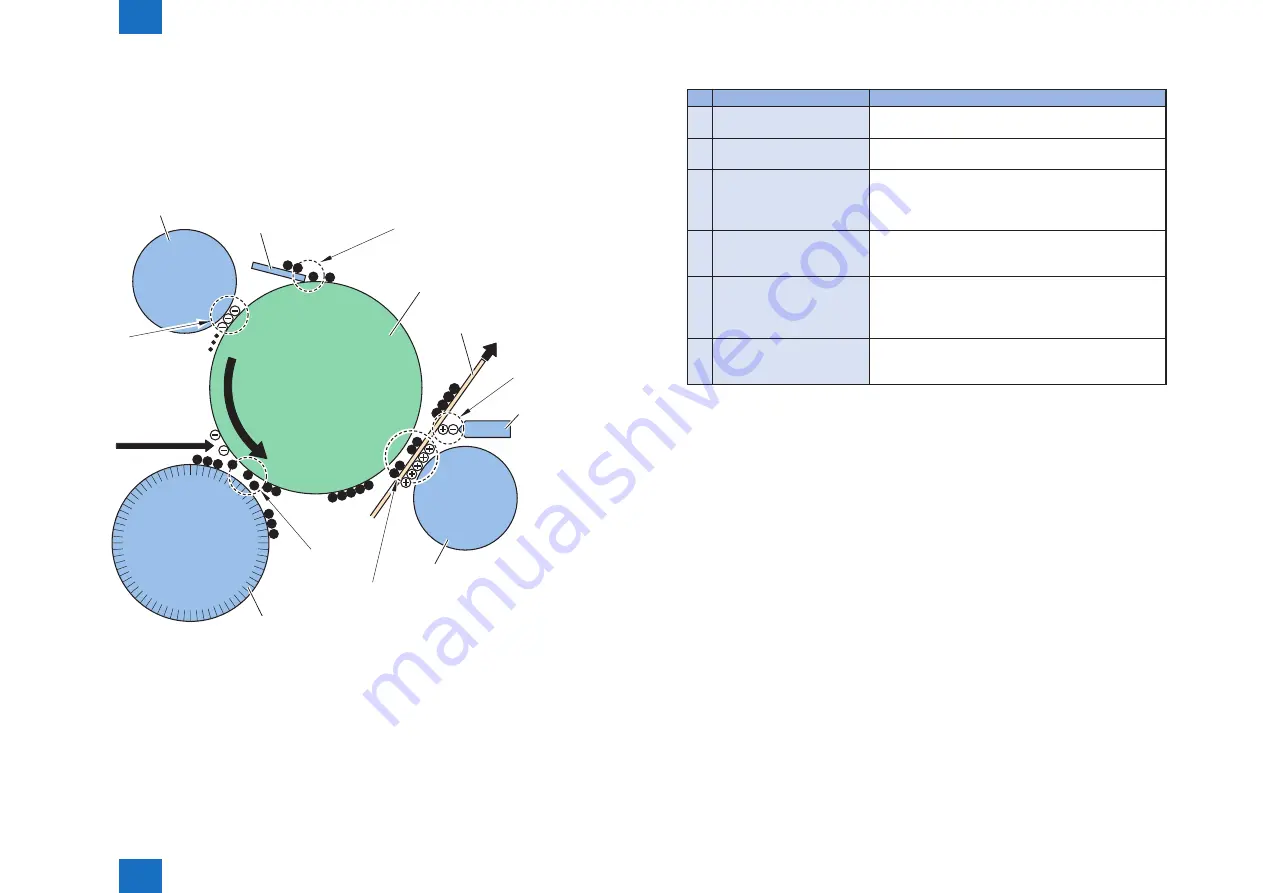
2
2
2-42
2-42
Technical Explanation > Image Formation System > Basic Configuration > Image Formation Process
Technical Explanation > Image Formation System > Basic Configuration > Image Formation Process
■
Image Formation Process
The image formation system of this machine consists of the Photosensitive Drum, Primary
Charging Roller, Developing Cylinder, Transfer Charging Roller, Static Eliminator and
Cleaning Blade, and the image formation process around the Drum Unit mainly consists of
the 6 blocks.
[1]
[4]
[6]
Cleaning Blade
Primary charging roller
[2]
[3]
[5]
Photosensitive drum
Static eliminator
Transfer charging roller
Paper
Developing cylinder
F-2-64
Image formation block
Description
[1] Primary charging block
To evenly make the surface of the Photosensitive
Drum negatively-charged.
[2] Laser exposure block
To neutralize electric charge by scanning laser beam
on the drum surface to create latent image.
[3] Developing block
To create visible image by attaching toner that has
been negatively charged from the Developing Cylinder
to the latent static latent image on the surface of the
Photosensitive Drum.
[4] Transfer block
To apply positively-charged potential from the back
side of paper to transfer toner on the drum to the
paper.
[5] Separation block
To separate paper from the Photosensitive Drum by
elastic force of paper and make the paper easy to be
separated by applying negatively-charged potential
from the back side of paper.
[6] Drum cleaning block
To remove residual toner on the surface of the drum
by the Cleaning Blade to be collected into the Waste
Toner Box.
T-2-27
Summary of Contents for 1730
Page 12: ...Update Firmware XXV Volume Control XXV Backup Data XXVI ...
Page 17: ...1 1 Product Overview Product Overview Product Lineup Features Specifications Parts Name ...
Page 235: ...7 7 Error Code Error Code Overview Error Code Jam Code Alarm Code ...
Page 250: ...8 8 Service Mode Service Mode Outline Details of Service Mode ...
Page 333: ... Service Tools General Timing Chart General Circuit Diagram List of User Mode Appendix ...






























